Inventory The Classroom!
Developed by Lauren Angel, PCM Play Intensive 2021
(FOCUS: K-2, Physical Movement, Science, Technology, Engineering and Mathematics (STEM), Creativity & Making, Design Thinking)
Efficiency in counting can be a tricky skill to teach. In the early years, students are used to counting groups of items by 1s and practicing memorization of counting by tens. This activity will allow for students to use a discovery approach to learn how much faster/more efficient it can be to count objects in groups of ten! Students will also feel like they are helping the teacher to complete a classroom task!
Students will be working on creating groups of ten in order to count by tens and some ones. Students will be given a task to help sort through some items in the classroom and decide the best/ most efficient way to count the items.
Materials
- Classroom materials such as pencils, erasers, prize box items, crayons, etc.
- Baskets for collecting
- Chart paper
- Markers
Set Up
Different areas in the classroom should have items that are in “need” of being counted. The teacher can pretend that something happened to the room where things got mixed up and needed to be sorted out and counted out. The teacher can talk about what it means to “take inventory” of the items in the classroom while cleaning to see if we need more of anything. Students will be separated into groups and given a piece of chart paper and some markers. Each group will be tasked with sorting and counting different objects around the room and they can use the chart paper and markers to record how they chose to count.
Student’s Job
What is the fastest/most efficient way to count a large amount of items?
What type of planning and cooperation had to go into deciding the fastest/most efficient way?
1. Optional but recommended: Interview (virtually or in person) someone who works in retail or sales about the inventorying process and why it is important.
2. Talk with your group about how you will begin sorting and counting the objects.
3. Assign someone to be the “recorder” to record how you are counting.
4. Begin sorting and counting, but make sure that you are working together as a team.
5. When you are done, go back and check your work and get ready to share what you and your group did.
6. Come together as a whole class and listen and present work.
Further Challenges:
What would have happened if you counted another way?
If there were less items would you have to count in the same way?
How can this help us keep a running inventory in our classroom?
What else might you count using this same strategy?
Teachers can also implement this activity more than one time throughout the year to check in on students knowledge and abilities.
Teacher’s Job
Standards Alignment
CCSS.MATH.CONTENT.K.CC.A.1
Count to 100 by ones and by tens.
CCSS.MATH.CONTENT.K.NBT.A.1
Compose and decompose numbers from 11 to 19 into ten ones and some further ones, e.g., by using objects or drawings, and record each composition or decomposition by a drawing or equation (such as 18 = 10 + 8); understand that these numbers are composed of ten ones and one, two, three, four, five, six, seven, eight, or nine ones.
CCSS.MATH.CONTENT.K.CC.B.4
Understand the relationship between numbers and quantities; connect counting to cardinality.
CCSS.MATH.CONTENT.K.CC.B.4.B
Understand that the last number name said tells the number of objects counted. The number of objects is the same regardless of their arrangement or the order in which they were counted.
Connection to Previous Work
This can be a summative activity following a portion of a place value unit. Or it can be done as a pre-assessment for the unit to see what students are able to do on their own and then again at the end to see what they have learned.
Prepare/ Background Info
As mentioned above, the teacher can use this as an activity at the end of a Place Value module or at the beginning. Facilitators of this lesson could consider letting the students attack the activity without much background information, as this might be interesting and tell a lot about their students’ understanding of counting, cardinality, and groups of ten.
Teachers will need to teach about inventorying items prior so that they understand the purpose of the activity. It is recommended that students be given the opportunity to interview someone who has experience inventorying for their job, if possible.
Facilitation Strategies
Students should be able to work collaboratively in their groups without much teacher direction. Clear expectations should be set prior to starting the activity so that students understand what they should and should not be doing. Modeling can be done if needed for certain students or groups of students.
Play to Notice (Learning Framework)
Problem Solving: Realizing this is taking a lot of time, is there a better way to do this (if counting by 1s)?
Collaborative Play: Assigning team jobs (i.e., the recorder, the counter, the object organizer, etc.)
Content Matter to Notice
Observe students’ ability to count objects using 1:1 correspondence accurately without mistakes, ability to count by tens if they group in that way, and ability to understand the final amount that they have.
SEL to Notice
Notice students’ collaboration with peers while grouping items and inventorying and their sharing out about what they found. The teacher should be looking for students’ ability to talk in front of peers in a coherent way. The way in which members of each group take turns sharing out information can also be noted. If needed, the teacher can assign student jobs while sharing (i.e., someone who holds the notes from the recording, someone who begins the conversation to tell how they started, and someone who tells what they found in conclusion).


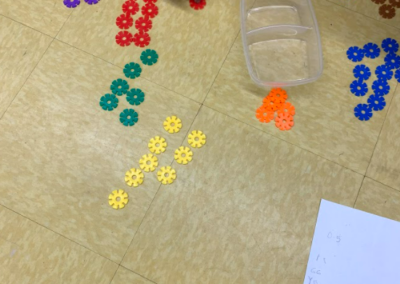
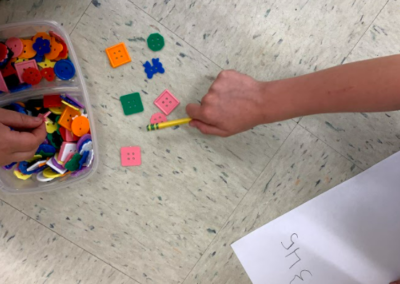
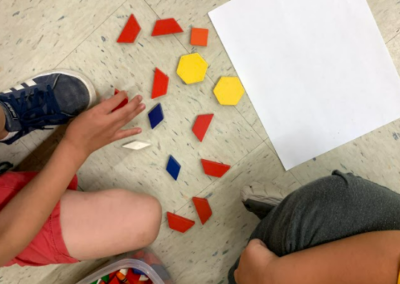
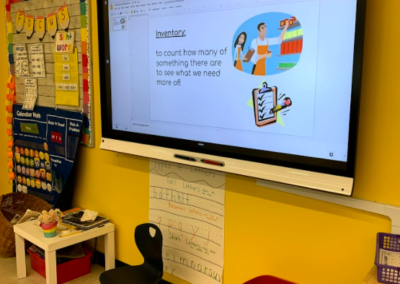
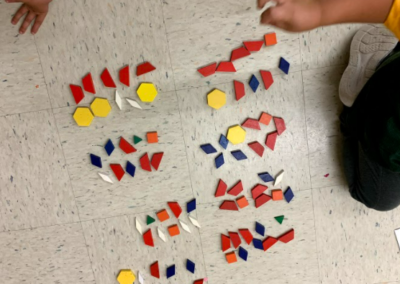
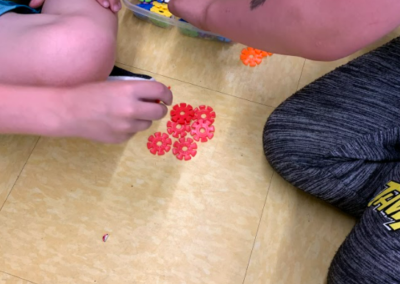
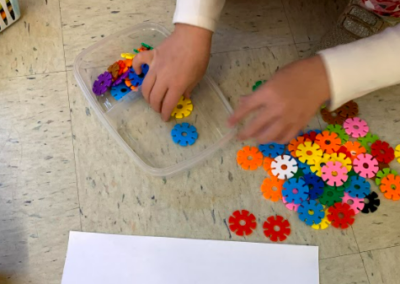
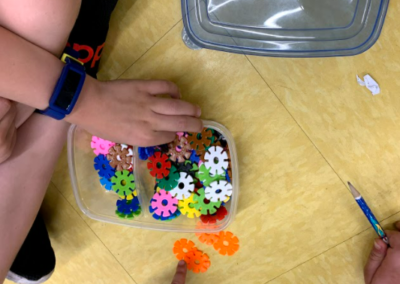
0 Comments